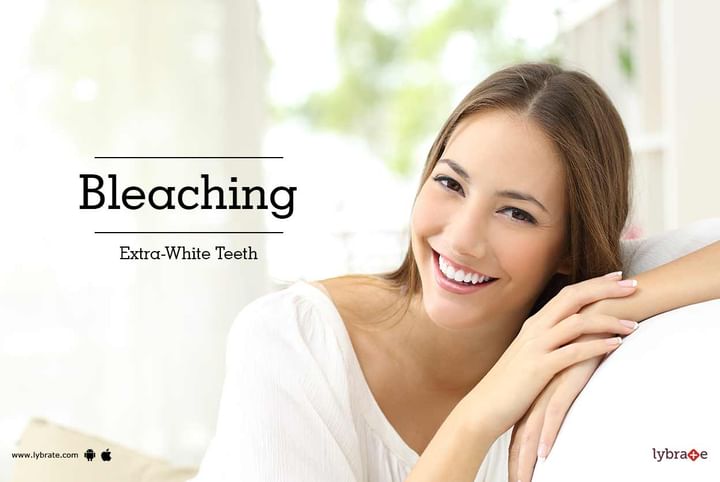Bleaching: Extra-White Teeth
Everybody wants that perfect smile showing off pearly white teeth, but not many have it. There is a constant try to improve the smile by making the teeth whiter and brighter. Teeth can be discolored intrinsically or extrinsically. They acquire different shades and sometimes even different colors like brown and black, making them stand out as extremely odd. Teeth change color either due to intrinsic or extrinsic reasons. Intrinsic is when minerals like fluoride get incorporated into the tooth, giving it white irregular spots. Aging also causes intrinsic staining, turning them to a pale yellow shade. This is more difficult to remove than the extrinsic coloring. Also, teeth change color due to extrinsic causes like food substances, smoking, medications, tobacco usage, poor oral hygiene, etc.
The introduction of tooth bleaching came as boon to those who were unhappy with their teeth color. Whitening can also be done in the dentist's office or at home by the patients themselves. Though over-the-counter bleaching agents are available, it is always advised to consult a dentist and then choose the appropriate material. The time of each application and the duration of the entire treatment are best decided by the dentist. The product provided by the dentist would be stronger and will produce quicker results than the ones available in the market.
At Home Bleaching: The dentist will take impressions of upper the lower jaws and fabricate customized trays. The right material is then chosen, which is applied on these trays and left in place for the desired amount of time. This needs to be repeated for a time decided by the dentist depending on how much whitening is desired. The desired color is usually achieved in about 4 weeks' time.
In-House Bleaching: This will require multiple visits to the dentist, usually about 1 to 3, of about 30 to 90 minutes each. The gums are first protected and then the bleaching agent is applied. It could require laser for activation in some cases. If the desired color is not achieved, it could be followed by a couple of applications at home. In some cases, there could be minor complications including gum irritation and increased tooth sensitivity. This is caused by the hydrogen peroxide, which is the standard component in all bleaching agents. The whitening process can be repeated at desired intervals to add that extra sparkle. Once the trays are fabricated, the bleaching agent can be used multiple times.
Teeth Whitening: Why You Should Talk to Your Dentist:
- Tooth bleaching can make teeth temporarily sensitive or be uncomfortable for people who already have sensitive teeth. When used incorrectly, home kits can also lead to burned and even temporarily bleached gums.
- Tooth whitening works best for people with yellow teeth and is less effective for people with brown teeth. If your teeth are gray or purple, tooth bleaching probably won't work at all.
- To be sure of tooth whitening is worth your time and money, talk to your dentist before you use an over-the-counter tooth whitening kit.
If you are not happy with the color of your teeth, talk to your dentist about what is the best method to change their color. The results could leave you surprised with a white, bright smile.



+1.svg)
